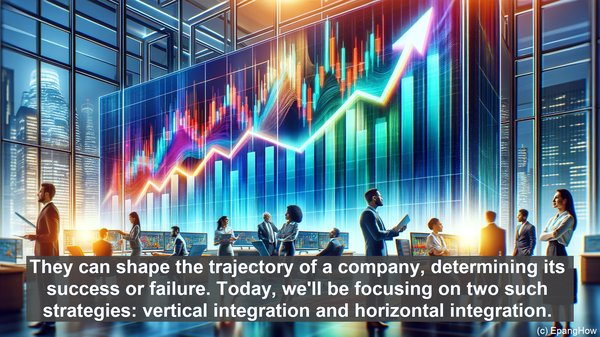Introduction: The World of Business Strategies
Hello and welcome! In the dynamic realm of business, strategies play a pivotal role. They can shape the trajectory of a company, determining its success or failure. Today, we’ll be focusing on two such strategies: vertical integration and horizontal integration. While both involve expanding a company’s reach, they do so in different ways. Let’s dive in!
Vertical Integration: A Comprehensive Approach
Vertical integration is a strategy where a company expands its operations by acquiring or merging with businesses that are either upstream or downstream in the supply chain. In simpler terms, it involves owning or controlling the entire production process, from raw materials to the final product. This can include acquiring suppliers, distributors, or even retail outlets. By doing so, a company gains more control over its supply chain, reducing dependencies and potentially lowering costs. It also allows for better coordination and streamlining of operations. For example, a smartphone manufacturer that owns the factories producing its components and also the retail stores selling its products is said to be vertically integrated.

Horizontal Integration: Expanding the Horizons
Unlike vertical integration, which focuses on the supply chain, horizontal integration involves expanding a company’s presence within a particular industry or market segment. It typically occurs through mergers or acquisitions of companies that operate at the same level of the supply chain. The goal here is to increase market share, eliminate competition, and potentially gain economies of scale. For instance, a company that manufactures cars acquiring another car manufacturer is an example of horizontal integration. By doing so, they can consolidate their position in the market and potentially benefit from synergies between the two entities.
Key Differences: Vertical vs Horizontal Integration
While both strategies involve expansion, there are key differences between vertical and horizontal integration. Firstly, vertical integration focuses on the supply chain, encompassing activities from raw materials to distribution. In contrast, horizontal integration is about expanding within a specific industry or market segment. Secondly, vertical integration aims to gain control and coordination, reducing dependencies and potentially lowering costs. Horizontal integration, on the other hand, is more about market dominance and potential synergies. Lastly, vertical integration can be seen as a ‘deep’ strategy, involving multiple stages of the production process. Horizontal integration, in comparison, is ‘broad,’ focusing on expanding within a particular level of the supply chain.
Implications and Considerations
Both vertical and horizontal integration have their own implications and considerations. For vertical integration, while it offers benefits such as increased control and potentially lower costs, it also comes with challenges. Managing a complex supply chain can be demanding, and there’s always the risk of overreliance on a single supplier or customer. Horizontal integration, on the other hand, can lead to market dominance, but it also raises concerns about monopolistic practices and potential antitrust issues. Additionally, both strategies require careful evaluation, considering factors such as market conditions, competition, and the long-term strategic goals of the company.

